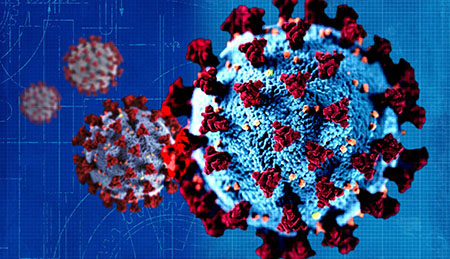by WorldTribune Staff, May 23, 2023
Researchers at Stanford University developed a test which could detect if an asymptomatic individual who tested positive for Covid was infectious. The test was available as early as May 2020 but was ignored by White House Covid czar Anthony Fauci and the CDC, a report said.
The test “could have altered the course of the pandemic response. It was never rolled out,” investigative reporter and author David Zweig, a previous contributor to the release of the Twitter files, noted in a substack.com report.
 Individuals could have received the Stanford test “to find out after they got over a bout of Covid whether they were still infectious or not, enabling them to go to work, visit relatives, and so on. Millions of kids could have tested out of isolation,” Zweig wrote.
Individuals could have received the Stanford test “to find out after they got over a bout of Covid whether they were still infectious or not, enabling them to go to work, visit relatives, and so on. Millions of kids could have tested out of isolation,” Zweig wrote.
The Covid overlords who instituted lockdowns long contended that asymptomatic spread accounted for a large portion of infections.
The Stanford research, which was available but ignored, determined that 96 percent of asymptomatic individuals who tested positive for Covid did not transmit the virus.
“Transmission from asymptomatic people is far, far less common than we were led to believe,” Zweig wrote. “The novel test at Stanford that showed a very low rate of infectious asymptomatic people who had tested positive was available as early as May 2020.”
“Yet the CDC [Centers for Disease Control and Prevention] and other health authorities did nothing,” Zweig wrote.
“The minus strand test gave a definitive answer one way or another,” Zweig wrote. But although the test was available as early as May 2020, the CDC did not publish the researchers’ paper about the test until February 2021.
The paper, published in the Emerging Infectious Diseases journal, stated that the analytical validation for the test was conducted “during May-June 2020.”
“This raises serious questions for those in charge of the CDC, NIH [National Institutes of Health], and NIAID [National Institute of Allergy and Infectious Diseases] for why resources were not allocated toward making this test broadly available,” Zweig wrote. “Though the test was developed for use in hospitals, its utility outside of a medical setting is obvious.”
During the first few months of the pandemic, “the specter of asymptomatic transmission undergirded not just policies on masks, but on distancing, and quarantines as well,” Zweig wrote.
Fauci referred to the purported threat of asymptomatic spread to justify his “180 on community mask recommendations.” For instance, Fauci told The Washington Post in July 2020: “We didn’t realize the extent of asymptotic spread … as the weeks and months came by, two things became clear: one, that there wasn’t a shortage of masks, we had plenty of masks and coverings that you could put on that’s plain cloth … so that took care of that problem. Secondly, we fully realized that there are a lot of people who are asymptomatic who are spreading infection. So, it became clear that we absolutely should be wearing masks consistently.”
The concept of “silent spread” was so influential that Dr. Deborah Birx, the White House Coronavirus Response Coordinator from Feb. 27, 2020, to Jan. 20, 2021, named her book “Silent Invasion: The Untold Story of the Trump Administration, Covid-19, and Preventing the Next Pandemic Before It’s Too Late” after it, Zweig said.
“The entire apparatus of our pandemic response — which, most consequentially, kept millions of healthy children out of full-time school for more than a year — was based on this notion,” Zweig wrote.
Membership . . . . Intelligence . . . . Publish
